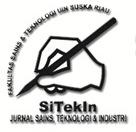Model Matematika untuk Penyakit Infeksi Cacing Parasit pada Kuda
Abstract
Full Text:
PDFReferences
A. Prof and B. Kalib, “( An Interpretive Study ) The Philosophy of Hiring Horses in the Holy Quran ( An Interpretive Study ) ( An Interpretive Study ),” vol. 17, no. 7, pp. 15653–15662, 2020.
D. Setiawan, I. Dwinata, and I. Oka, “Identifikasi Jenis Cacing Nematoda Pada Saluran Gastrointestinal Kuda Penarik Cidomo Di Kecamatan Selong, Lombok Timur,” Indones. Med. Veterinus, vol. 3, no. 5, pp. 351–358, 2015.
H. Shatyaayyupranathasari, E. Sudarnika, and Y. Ridwan, “Prevalensi dan faktor risiko infeksi cacing saluran pencernaan pada kuda delman di Kota Bogor,” Acta Vet. Indones., vol. 9, no. 2, pp. 87–96, 2021.
Direktorat Jenderal Peternakan dan Kesehatan Hewan Kementerian Pertanian, Statistik Peternakan dan Kesehatan Hewan 2021/ Livestock and Animal Health Statistics 2021. 2021.
E. O. Lind, E. Rautalinko, A. Uggla, P. J. Waller, D. A. Morrison, and J. Höglund, “Parasite control practices on Swedish horse farms,” Acta Vet. Scand., vol. 49, no. 1, pp. 1–9, 2007, doi: 10.1186/1751-0147-49-25.
E. Zelpina, S. Sujatmiko, P. S. Noor, and D. Lefiana, “Parascaris equorum in Horses of Payakumbuh City, West Sumatra, Indonesia,” World’s Vet. J., vol. 12, no. 2, pp. 181–185, 2022, doi: 10.54203/scil.2022.wvj23.
I. H. Pratama, S. Supriadi, M. Janah, and A. L. D. Agustin, “Deteksi Telur Nematoda Gastrointestinal Pada Feses Kuda (Equus caballus) Cidomo Di Pasar Kecamatan Empang Sumbawa,” Mandalika Vet. J., vol. 1, no. 1, p. 23, 2021, doi: 10.33394/mvj.v1i1.3620.
K. E. Ogbein, A. G. Dogo, D. O. Oshadu, and E. R. Edeh, “Gastrointestinal parasites of horses and their socio-economic impact in Jos Plateau – Nigeria,” Appl. Vet. Res., vol. 1, no. 3, pp. 1–11, 2022, doi: 10.31893/avr.2022010.
J. C. Blackwood and L. M. Childs, “An introduction to compartmental modeling for the budding infectious disease modeler,” Lett. Biomath., vol. 5, no. 1, pp. 195–221, 2018, doi: 10.1080/23737867.2018.1509026.
R. J. Smith?, P. Cloutier, J. Harrison, and A. Desforges, “A mathematical model for the eradication of Guinea Worm Disease,” Underst. Dyn. Emerg. Re-Emerging Infect. Dis. Using Math. Model., vol. 661, no. 2, pp. 133–156, 2012.
A. G. Lambura, G. G. Mwanga, L. Luboobi, and D. Kuznetsov, “Mathematical Model for Optimal Control of Soil-Transmitted Helminth Infection,” Comput. Math. Methods Med., vol. 2020, 2020, doi: 10.1155/2020/6721919.
R. Netshikweta and W. Garira, “A Multiscale Model for the World’s First Parasitic Disease Targeted for Eradication: Guinea Worm Disease,” Comput. Math. Methods Med., vol. 2017, 2017, doi: 10.1155/2017/1473287.
I. Ghosh, P. K. Tiwari, S. Mandal, M. Martcheva, and J. Chattopadhyay, “A mathematical study to control guinea worm disease: A case study on chad,” J. Biol. Dyn., vol. 12, no. 1, pp. 846–871, 2018, doi: 10.1080/17513758.2018.1529829.
J. E. Vinson, A. W. Park, C. A. Cleveland, M. J. Yabsley, V. O. Ezenwa, and R. J. Hall, “Alternative transmission pathways for guinea worm in dogs: implications for outbreak risk and control,” Int. J. Parasitol., vol. 51, no. 12, pp. 1027–1034, 2021, doi: 10.1016/j.ijpara.2021.05.005.
DOI: http://dx.doi.org/10.24014/sitekin.v20i1.20415
Refbacks
- There are currently no refbacks.
Copyright (c) 2022 SITEKIN: Jurnal Sains, Teknologi dan Industri
 | Editorial Address: FAKULTAS SAINS DAN TEKNOLOGI UIN SULTAN SYARIF KASIM RIAU Kampus Raja Ali Haji Gedung Fakultas Sains & Teknologi UIN Suska Riau Jl.H.R.Soebrantas No.155 KM 18 Simpang Baru Panam, Pekanbaru 28293 © 2023 SITEKIN, ISSN 2407-0939 |
SITEKIN Journal Indexing:
Google Scholar | Garuda | Moraref | IndexCopernicus | SINTA

SITEKIN by http://ejournal.uin-suska.ac.id/index.php

.png)





